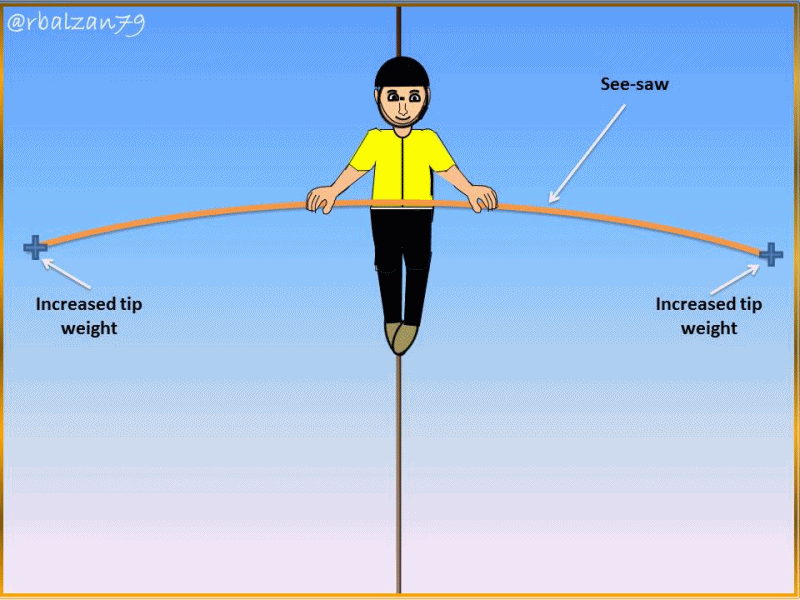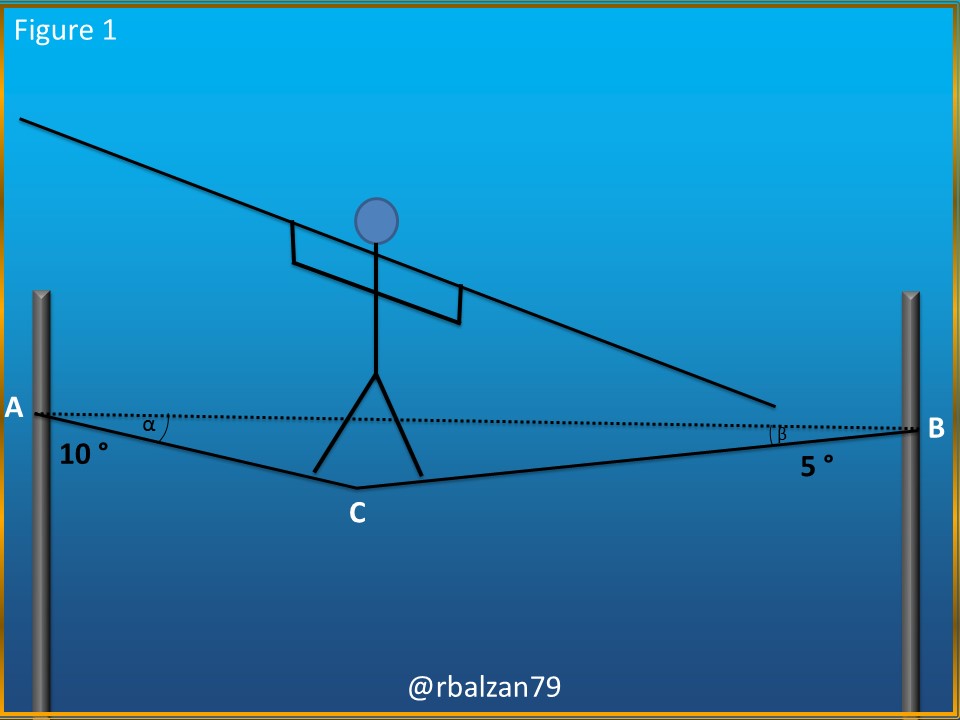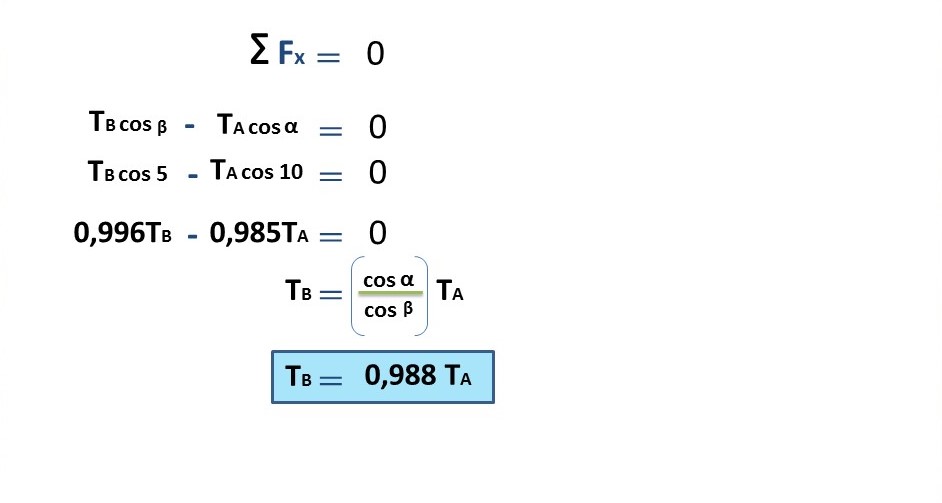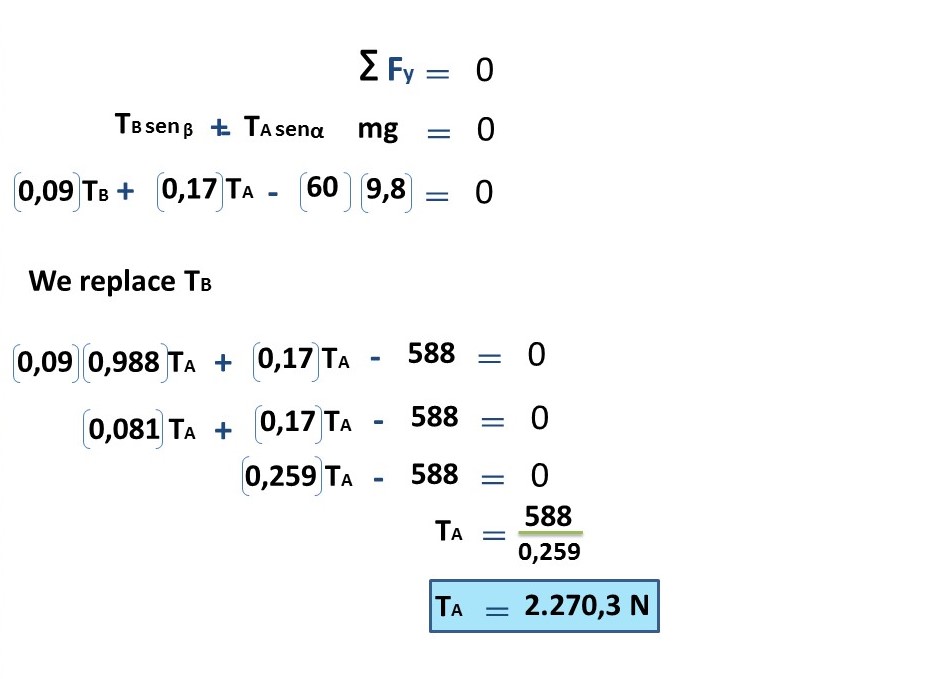Calculation of the tension at each end of a tightrope walker's rope

Any particle system, such as our body, for example, will have a resultant force, thus indicating an imaginary concentric point which allows us to balance the system, as does a professional balancing person like the one we see in the gif at the beginning of this article, this type of balance allows us to relate to physical variables such as the tensions to which a certain rope is subjected, such as the one that supports a tightrope walker.
Therefore, in order to continue deepening in this topic and learning about the different physical quantities related to equilibrium, we will analyze another example, through an exercise like the one you can see below.
Exercise
A famous tightrope walker is performing his impressive balancing act, his body has a mass of 60 kg, this person is as you know mounted on a rope which is tied to two poles, therefore, one end of the rope is inclined 10 ° relative to the horizontal and the other end 5 °, according to the above answer to the following question:
a.- What will be the tension at each end of the rope?
Solution
Data:
m = 60 kg (mass of the tightrope walker's body).
α = 10° (Inclination at end A)
β = 5° (Inclination at end B)
TA = ? (Tension at the end A)
TB = ? (Tension at the end B)
We can make an image showing the conditions given for the tightrope walker as shown in Figure 1 below.

a.- To begin to answer our question, we will choose for this analysis the point below the equilibrist (C), therefore, in this way we could study the rope as if it were two ropes, which meet at point C, this leads us to express that due to the law of action-reaction both tensions at the two ends are the same as that exerted on each portion of rope from these ends to point C.
It is important to be able to perform the following force diagram at the selected point, i.e. C, as shown in figure 2 below:

Now we apply the first equilibrium condition on each of the axes:


In this way we obtain the value of the voltage at the A end, now with this value we implement it to find the value of the voltage at the B end, as you can see.

In this way we obtain the tensions at each end of the rope where our wonderful tightrope walker is mounted.
Conclusion
Many things we have been able to understand with the knowledge acquired with the calculation of the tensions to which different ropes are subjected that fulfill a specific task, such as the one analyzed in this opportunity, which supports a tightrope walker while performing his wonderful balancing act, which also makes use of the management of its center of mass, in order to stay on the rope, we also note that there is greater tension at the end that has greater degree of inclination (TA) with 2,270.3 N, than at the end with less inclination (TB) with 2,243.1 N.
Innumerable are the phenomena that develop around us, and from all of them we continue learning to advance in our purpose of increasing our longevity and obtaining benefits in all senses, without doubt, there are numerous examples that we can find and we can perform these mathematical calculations, and which we will continue to offer later.
Until another opportunity my dear friends.
Note: The images were created by the author using Power Point and Paint, the animated gif was created using PhotoScape.
Recommended Bibliographic References
[1] Locating the Human Center of Gravity. Link.
[2] Calculating Cable Tension. Link.
Thanks for your contribution to the STEMsocial community. Feel free to join us on discord to get to know the rest of us!
Please consider delegating to the @stemsocial account (85% of the curation rewards are returned).
You may also include @stemsocial as a beneficiary of the rewards of this post to get a stronger support.
Thank you for your valuable support. Best regards.
thanks for this class
!1UP
You have received a 1UP from @gwajnberg!
@ccc-curator, @stem-curator, @neoxag-curator, @pal-curator
And they will bring !PIZZA 🍕.
Learn more about our delegation service to earn daily rewards. Join the Cartel on Discord.